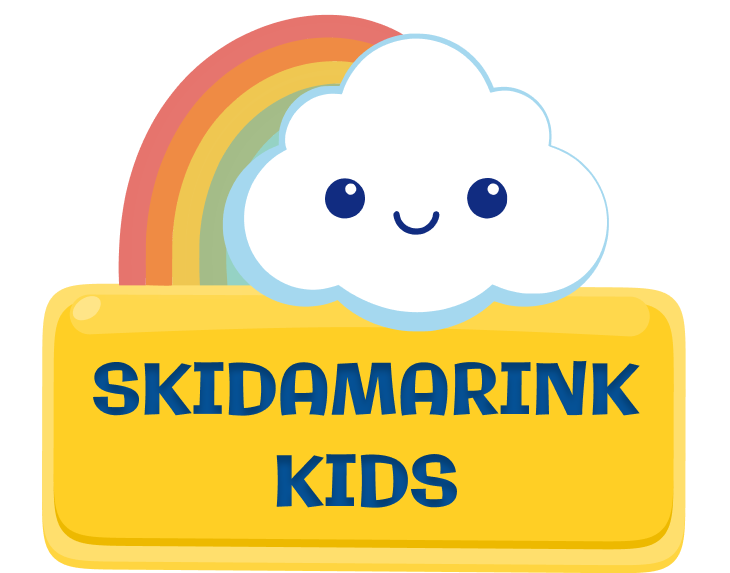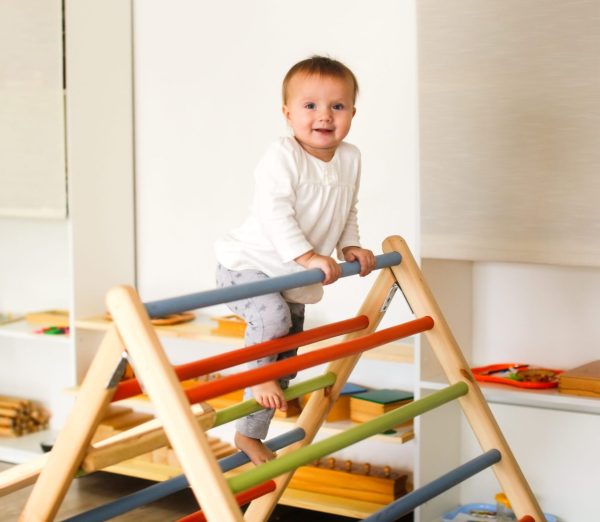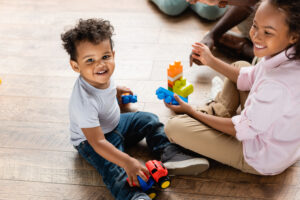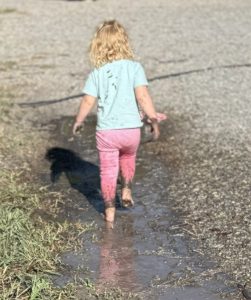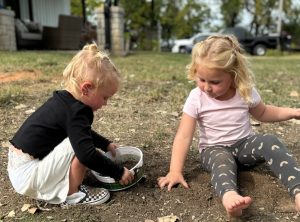Have you ever wondered why your toddler never stops moving? Or why your preschooler seems to learn best when bouncing around? The answer lies in how God designed childhood development. Movement isn’t just something children do. It’s how they grow, learn, and build their brains! The connection between movement and child development runs deeper than most people realize. Physical activity isn’t just about building strong bodies. It’s the primary way children develop the neural pathways that support everything from motor development, emotional regulation to academic learning.
Understanding this connection changes how we view childhood behaviors. That child who can’t sit still isn’t being difficult. They’re following a biological drive to move, explore, and develop. When we support this natural need for movement, we support every aspect of healthy development.
The Science Behind Movement and Child Development
Research reveals something remarkable. Movement directly shapes how our brains development and function during critical developmental windows. This isn’t just about getting exercise. It’s about building the actual architecture of a developing brain.
How Movement Builds the Brain
Every time a child moves, their brain creates and strengthens neural connections. These pathways form the foundation for all future learning and behavior. Here’s what happens:
Movement sends sensory information to the brain. The brain processes this information and creates responses. With repetition, these pathways become faster and more efficient. This process literally builds brain structure!
The vestibular system controls balance and spatial awareness. It connects to almost every part of the brain. When children spin, jump, or swing, they’re not just having fun. They’re giving their brains powerful input that supports:
- Attention and focus development
- Emotional regulation pathways
- Sensory processing abilities
- Visual motor integration
- Spatial awareness
- Reading and writing readiness
The Right Brain Connection
Here’s something crucial about movement and child development. Physical activity especially strengthens the right side of the brain. This hemisphere develops first in childhood and handles essential functions.
The right brain acts as the “brake pedal” for behavior and emotions. It helps children:
- Pause before acting on impulses
- Manage strong feelings. Read social cues
- Control their bodies
- Stay calm under stress
- Respond rather than react
Movement naturally stimulates this critical brain region. When children get plenty of physical activity, their right brain develops stronger connections. This leads to better self regulation, improved behavior, and stronger emotional control.
Neural Integration Through Movement
The brain has two hemispheres that must learn to work together. This integration is needed for all complex skills. Movement provides the perfect opportunity for building these connections.
Cross lateral movements are especially powerful. These movements happen when body parts cross the body’s midline. For example, when a child reaches their right hand to their left foot, both brain hemispheres must work together. This builds the neural bridges that support:
- Reading and writing skills
- Coordinated physical movements
- Problem solving abilities
- Attention and focus
- Balanced emotional responses
This explains why children who move more often show better academic readiness.
Primitive Reflexes and Movement
Babies are born with automatic movement patterns called primitive reflexes. These reflexes help with movement and survival early in life. However, they must integrate, or turn off, for higher level skills to develop properly
Movement naturally helps integrate primitive reflexes. As children move and explore, their nervous systems mature. The primitive reflexes gradually give way to more controlled, purposeful movements.
When reflexes don’t integrate properly, they can create challenges:
- Difficulty sitting still and focusing
- Poor impulse control
- Coordination problems
- Sensory sensitivities
- Emotional regulation struggles
- Learning difficulties
Movement as Natural Integration
The good news is that movement helps integrate these reflexes naturally. Helpful activities that involve:
- Rolling and tumbling
- Crawling patterns
- Crossing the midline
- Balance challenges
- Core strengthening
- Vestibular input from spinning and swinging
These movements provide the sensory input needed for the nervous system to mature properly. This is another reason movement and child development are so closely linked!
Physical Development Through Movement
Obviously, movement builds strong, capable bodies. However, the physical benefits go way beyond just fitness. Physical development happens in a specific sequence. Each stage builds on the previous one.
The Developmental Sequence
Physical development builds in a specific order:
- Core stability develops before fine motor control. You can’t skip steps!
- Coordination improves through repeated movement patterns
- Balance develops with varied movement challenges
- Body awareness grows through physical input
- Motor planning skills transfer to all areas of life
- Overall fitness creates a foundation for lifelong health
These physical benefits don’t happen through both structured exercise programs and unstructured play. They develop naturally through play based movement when children have enough time and space to explore.
Gross Motor Skills
Gross motor skills involve the large muscles of the body. These “big movements” are essential for daily life. They include:
- Walking, running, and jumping
- Climbing and balancing
- Throwing and catching
- Pushing and pulling
- Kicking and hopping
Children master these skills through repeated practice in play. Each repetition strengthens the neural pathways that control movement. Over time, movements become more coordinated, controlled, and automatic.
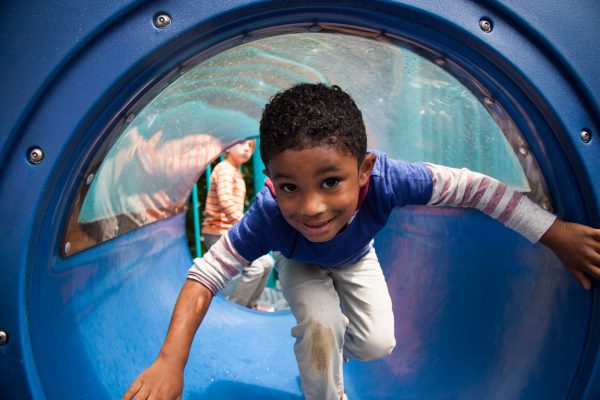
Fine Motor Skills Build on Gross Motor
Here’s something important. Fine motor skills, like holding a pencil or using scissors, depend on strong gross motor development first. You must build from the core outward.
A child needs strong core muscles before they can control their shoulders. They need shoulder control before they can control their hand. They need hand control before they can control their fingers. This is why pushing academics too early often fails. Children need sufficient movement experience before they’re physically ready for detailed fine motor tasks like writing. Weight bearing activities such as crawling, climbing and animal walks are great way to prepare for fine motor success.
Cognitive Benefits of Movement
The impact of movement and child development on thinking skills is remarkable. Physical activity doesn’t just prepare the brain for learning. It actively enhances cognitive function.
Attention and Focus
Movement provides the sensory input the brain needs to maintain attention. Children’s brains require regular movement breaks to process information well. Without enough movement, focus naturally decreases.
The connection between movement and child development supports:
- Better attention span through vestibular system development
- Executive function growth essential for planning and decision making
- Improved impulse control through repeated practice of starting and stopping movements
- Learning readiness by helping primitive reflexes mature
- Sensory processing development through varied movement experiences
- Visual motor integration necessary for reading and writing
Research consistently shows that children who move more develop stronger thinking abilities. The link between movement and child development creates the foundation for academic success long before formal education begins.
Memory and Learning
Physical activity enhances memory formation and recall. Movement increases blood flow to the brain. Upside down play is a great way to increase this. Think about it, most kids love to hand their heads upside down or do flips. This delivers more oxygen and nutrients to brain cells.
In my practice as an OT, I noticed a connection with kids who did not seem to like movement and speech delays. As we worked on their tolerance of movements like swinging and upside down play they started to say more sounds and words. The brain is amazing in how it works! Movement supports:
- Better absorption of new information while learning
- Stronger memory formation during sleep and rest
- Easier recall when remembering information later
- Better ability to apply learning to new situations
Additionally, many children learn best through movement. Kinesthetic learners need to move while processing information. When we allow movement during learning, we support these children’s natural learning style.
Problem Solving and Creativity
Movement encourages creative thinking and problem solving. Physical play often requires children to think on their feet. They must adapt to changing situations and find creative solutions.
Movement activities that build problem solving include:
- Navigating obstacle courses.
- Playing imaginative games.
- Building with large materials.
- Engaging in cooperative play.
- Exploring new physical challenges.
These experiences develop mental flexibility that transfers to all areas of life.
Emotional and Social Development

Perhaps one of the most valuable aspects of movement and child development is the impact on emotional wellbeing.
Active play helps children manage big feelings well through physical release. It helps lower stress and anxiety by reducing cortisol levels. This helps regulate our mood naturally through endorphin release. In addition,, this helps Improve transitions between activities by providing sensory reset opportunities.
When children struggle with emotional regulation, movement often provides the most effective path to calming.
Building Confidence
Movement experiences build self confidence and self esteem. As children master new physical skills, they feel capable and proud. This positive feeling carries over into other areas of life.
Additionally, movement provides natural opportunities to take safe risks and experience success through effort. It also helps kids learn from mistakes without lasting consequences, as well as build resilience through physical challenges.
These experiences shape how children see themselves and their abilities.
Social Skills Through Movement
Many movement activities happen in social settings. Whether at the playground, in organized activities, or during family play, movement provides natural opportunities to practice social skills.
Movement and child development support social growth by teaching:
- Turn taking and sharing space
- Cooperation and teamwork
- Reading social cues
- Following rules
- Handling winning and losing
- Resolving conflicts
- Showing empathy and awareness of others
These social skills develop most naturally through active play with others.

The Modern Movement Crisis
Today’s children move far less than previous generations. Technology, safety concerns, structured schedules, and less outdoor time have dramatically reduced children’s movement opportunities.
Research shows children today spend:
7 or more hours daily on screens. Less than 1 hour in unstructured outdoor play. Most of their day sitting in structured settings. Limited time in free, creative movement.
This lack of movement has real consequences. We’re seeing increases in:
- Attention difficulties and Emotional regulation struggles
- Coordination problems
- Sensory processing issues
- Anxiety and depression
- Academic challenges despite earlier formal instruction
Many of these issues connect directly to not getting enough movement during critical developmental periods. The relationship between movement and child development isn’t optional. It’s essential!
Ready to Turn Reduce Meltdowns and Teach Your Child How to Regulate?
Reclaiming Movement in Childhood
Supporting healthy development means bringing movement back into daily life. This doesn’t require expensive programs or special equipment. It requires:
- Prioritizing unstructured outdoor play
- Limiting screen time to reasonable amounts
- Providing space and time for active play
- Joining children in movement activities
- Reducing overly scheduled days
- Valuing play as essential, not extra.
Small changes can make a big difference in supporting the natural connection between movement and child development.
Practical Ways to Support Movement and Child Development
Understanding the science is great. But how do you actually support this connection in daily life? Here are practical strategies that work:
Create Daily Movement Opportunities
Build movement into everyday routines. Here are some fun examples:
- Walk or bike instead of driving when possible
- Take movement breaks every 30 to 45 minutes.
- Dance while cleaning or cooking
- Play active games as a family
- Let children help with physical tasks like carrying groceries or pushing laundry basket
Prioritize Outdoor Play
Nature provides the best movement opportunities. Outside, children naturally run, jump, and climb more. They engage their vestibular system through swinging and spinning. As well as, navigate uneven surfaces that challenge balance. Nature provides ways for kids to experience varied textures and sensory input. Outside play encourages child to play more creatively and freely.
Aim for at least one hour of outdoor play daily, regardless of weather. Children with appropriate clothing can play outside in almost any conditions!
Support Different Types of Movement
Children need variety in their movement experiences. Mic it up and make sure you provide:
- Heavy work activities like pushing, pulling, and carrying
- Vestibular input from swinging, spinning, and hanging upside down
- Fine motor practice that builds on gross motor skills
- Balance challenges on different surfaces
- Coordination activities that cross the midline
- Free play where children direct their own movement
Reduce Sitting Time
Modern life requires too much sitting. Help children move more by:
- Using standing or movement options during homework
- Taking frequent breaks during seated activities
- Allowing fidget tools during focus tasks
- Providing movement alternatives to traditional chairs like balance cushions
- Keeping screen time limited and taking movement breaks during use
Make Movement Fun
The best movement is play! Children naturally seek the movement their brains need when we give them space and time. Follow their lead and notice what types of movement they crave.
Some children love climbing and jumping. Others prefer spinning and swinging. Still others seek heavy work through pushing and pulling. Each child knows what their nervous system needs. Trust them!
Movement Needs Change with Age
The relationship between movement and child development looks different at each stage. Understanding these differences helps you provide the right support at the right time.
Infants and Toddlers
Young children need:
- Plenty of floor time to develop naturally
- Safe spaces to explore without restrictions
- Varied positions throughout the day
- Opportunities to practice emerging skills
- Minimal time in containers like swings and bouncers
Preschoolers
At this age, children need:
- Several hours of active play daily
- Time for both structured and unstructured movement
- Opportunities to practice emerging skills
- Variety in movement experiences
- Space to take safe physical risks
School Age Children
Older children benefit from:
- Daily active play beyond organized sports
- Movement breaks during homework and screen time
- Opportunities to build specific skills through practice
- Both free play and more structured activities
- Activities that match their interests and abilities
The Long Term Impact
The relationship between movement and child development extends far beyond childhood. Children who are physically active tend to:
- Do better in school throughout their education
- Show stronger problem solving abilities
- Have better emotional regulation as teens and adults
- Keep healthier lifestyle habits throughout life
- Experience lower rates of anxiety and depression
- Show greater resilience in facing challenges
By making movement a priority now, you’re setting your child up for lifelong success in all areas.
Embracing the Moving to Grow Philosophy
Remember that movement and child development aren’t about pushing children to develop faster. It’s about giving the right conditions for natural development to happen. Every child moves at their own pace and has unique movement needs.
When we understand that movement is the main language of childhood development, we can better support our children’s journey. We help them become capable, confident, and well regulated people. Movement and child development aren’t separate. They’re two parts of the same healthy growth.
By prioritizing movement, reducing sitting time, and following your child’s natural drive to move and explore, you’re giving them the foundation they need. This foundation supports success in all areas of life. The science is clear. Movement isn’t just good for development. It’s essential for it!
Looking for more ways to support your child’s development through movement?
- Check out my blog on Outdoor Play Benefits for Kids: Essential Nature Time Activities and our companion blog Gross Motor Activities for Kids: Moving to Grow Guide for Parent
- The Book “Balanced and Barefoot” by Angela J. Hanscom is a resource for great insights on movement and outdoor play
Do you have possible concerns about your child's motor skill development?
Want more infomation, check out my blog Motor Skill Concerns: Why The Rise in Developmental Delays? or Toddler Developmental Red Flags: When to Seek Help for Delays
– Kendra
